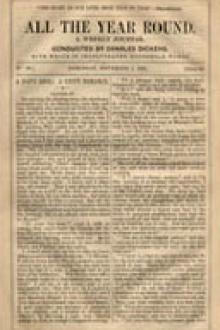Struggles and Triumphs P. T. Barnum (the beginning after the end read novel .TXT) 📖

- Author: P. T. Barnum
Book online «Struggles and Triumphs P. T. Barnum (the beginning after the end read novel .TXT) 📖». Author P. T. Barnum
On that Fourth of July, at one o’clock, p.m., my Museum was so densely crowded that we could admit no more visitors, and we were compelled to stop the sale of tickets. I pushed through the throng until I reached the roof of the building, hoping to find room for a few more, but it was in vain. Looking down into the street it was a sad sight to see the thousands of people who stood ready with their money to enter the Museum, but who were actually turned away. It was exceedingly harrowing to my feelings. Rushing downstairs, I told my carpenter and his assistants to cut through the partition and floor in the rear and to put in a temporary flight of stairs so as to let out people by that egress into Ann Street. By three o’clock the egress was opened and a few people were passed down the new stairs, while a corresponding number came in at the front. But I lost a large amount of money that day by not having sufficiently estimated the value of my own advertising, and consequently not having provided for the thousands who had read my announcements and seen my outside show, and had taken the first leisure day to visit the Museum. I had learned one lesson, however, and that was to have the egress ready on future holidays.
Early in the following March, I received notice from some of the Irish population that they meant to visit me in great numbers on “St. Patrick’s day in the morning.” “All right,” said I to my carpenter, “get your egress ready for March 17”; and I added, to my assistant manager: “If there is much of a crowd, don’t let a single person pass out at the front, even if it were St. Patrick himself; put every man out through the egress in the rear.” The day came, and before noon we were caught in the same dilemma as we were on the Fourth of July; the Museum was jammed and the sale of tickets was stopped. I went to the egress and asked the sentinel how many hundreds had passed out?
“Hundreds,” he replied, “why only three persons have gone out by this way and they came back, saying that it was a mistake and begging to be let in again.”
“What does this mean?” I inquired; “surely thousands of people have been all over the Museum since they came in.”
“Certainly,” was the reply “but after they have gone from one saloon to another and have been on every floor, even to the roof, they come down and travel the same route over again.”
At this time I espied a tall Irish woman with two good-sized children whom I had happened to notice when they came in early in the morning.
“Step this way, madam,” said I politely, “you will never be able to get into the street by the front door without crushing these dear children. We have opened a large egress here and you can pass by these rear stairs into Ann Street and thus avoid all danger.”
“Sure,” replied the woman, indignantly, “an’ I’m not going out at all, at all, nor the children aither, for we’ve brought our dinners and we are going to stay all day.”
Further, investigation showed that pretty much all of my visitors had brought their dinners with the evident intention of literally “making a day of it.” No one expected to go home till night; the building was overcrowded, and meanwhile hundreds were waiting at the front entrance to get in when they could. In despair I sauntered upon the stage behind the scenes, biting my lips with vexation, when I happened to see the scene-painter at work and a happy thought struck me: “Here,” I exclaimed, “take a piece of canvas four feet square, and paint on it, as soon as you can, in large letters—
To The Egress.”
Seizing his brush he finished the sign in fifteen minutes, and I directed the carpenter to nail it over the door leading to the back stairs. He did so, and as the crowd, after making the entire tour of the establishment, came pouring down the main stairs from the third story, they stopped and looked at the new sign, while some of them read audibly: “To the Aigress.”
“The Aigress,” said others, “sure: that’s an animal we haven’t seen,” and the throng began to pour down the back stairs only to find that the “Aigress” was the elephant, and that the elephant was all out o’ doors, or so much of it as began with Ann Street. Meanwhile, I began to accommodate those who had long been waiting with their money at the Broadway entrance.
Notwithstanding my continual outlays for additional novelties and attractions, or rather I might say, because of these outlays, money poured in upon me so rapidly that I was sometimes actually embarrassed to devise means to carry out my original plan for laying out the entire profits of the first year in advertising. I meant to sow first and reap afterwards. I finally hit upon a plan which cost a large sum, and that was to prepare large oval oil paintings to be placed between the windows of the entire building, representing nearly every important animal known in zoology. These paintings were put on the building in a single night, and so complete a transformation in the appearance of an edifice is seldom witnessed. When





Comments (0)